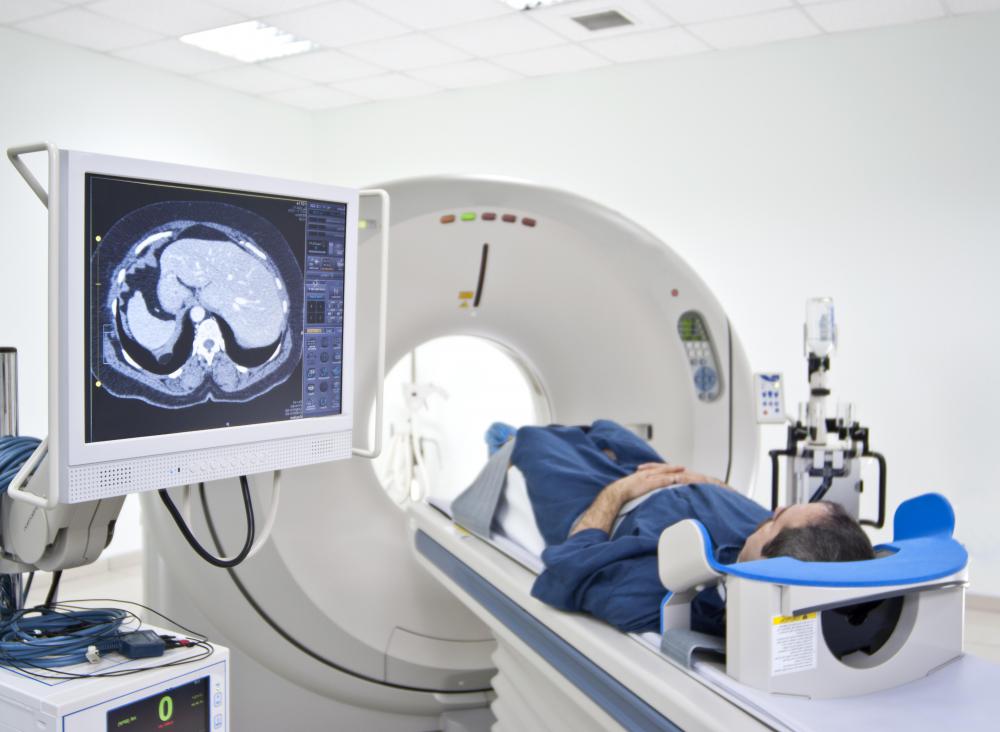At EasyTechJunkie, we're committed to delivering accurate, trustworthy information. Our expert-authored content is rigorously fact-checked and sourced from credible authorities. Discover how we uphold the highest standards in providing you with reliable knowledge.
What Is a Red Diode Laser?
A red diode laser is a solid state electronics component that produces an intense beam of visible light with wavelengths of 630 to 700 nanometers (nm) in the red portion of the visible spectrum. Light is generated by passing current across semiconducting material, which releases photons. Their light intensifies through rapid reflection between mirrors, excited by surrounding energized electrons, and the conical beam gets straightened by a collimating lens, a curved lens that aligns diode light rays into parallel lines aimed toward infinity. Laser diodes are used in common electronics equipment, consumer products, and laser light shows.
Red diode laser modules appear in numerous products and technologies. They perform precise measurements for rangefinders and read merchandise barcodes. The devices permit experimental spectrum analysis used in physics and medical experiments. Diodes are light-sensitive components employed in everything from security and defense technologies to pointers and disc players. Industries that use lighting design also have numerous creative uses for these eye-catching light sources.

Although similar to the technology that produces a light emitting diode (LED), a red diode laser is a true laser. While it is more difficult to produce a narrow line emission with a diode, compared with gas or crystal lasers, these components have a simpler design and manufacture by comparison. Beams are intensified by elongating cavity length; diodes can be stacked as well for multiplied output power. Parallel rays form a red light beam with intensity that varies according to its precise wavelength; beams closer to 630 nm appear five times brighter than those at 700 nm. Green lasers, by comparison, use 808 nm light, which is converted by a crystal to 1,064 nm and then squeezed down to 532 nm, producing an even brighter beam, competing with red lasers as a popular choice for consumer gadgets.

Replacing helium-neon lasers in supermarket scanners and hospital equipment, red diode laser components have become more common and cheap. Most function in the 3 to 5 milliwatt (mW) range, though higher-power diodes in the 10 mW range are available. Stacked laser diode bars can produce from several hundred to several thousand watts of power and can be very costly. In hospitals, these devices function in computerized tomography (CT) and magnetic resonance imaging (MRI) scanners and other equipment.
Laser energy output is not proportional to the strength of its visible beam. The brightness or coloring of a laser won't indicate its optical output power or potential burning hazards to the human eye. Any red diode laser with a collimating lens, higher listed output power, or wavelengths nearer the invisible infrared band presents greater hazard to eye safety. Imperfections can arise due to manufacturing processes or faulty components; all laser beams should be calibrated indirectly and never pointed into eyes. They also function as gun sighting beams, so public misuse can present other hazards.
AS FEATURED ON:
AS FEATURED ON:












Discuss this Article
Post your comments